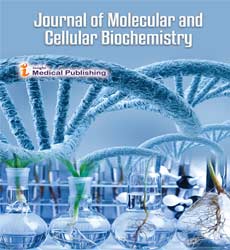Annexin A5 and MFG-E8 as potential plasma biomarkers for Alzheimer's disease
Abstract
Biomarker study on dementia has developed and most reliable fluid markers are amyloid peptide (Aβ), TAU and phosphorylated TAU detected in cerebrospinal fluid. In addition, there is great interest in blood-based markers of Alzheimer’s disease (AD) since blood extraction is much less invasive. Moreover, plasma biomarkers can be measured at relatively low expense once a standard system of measurement is established. However, there is not yet an established or validated diagnostic test for plasma biomarkers. Using a neuronal cell culture model we have found that annexin A5 and Milk fat globule-EGF factor 8 protein (MFG-E8), Ca2+ and phospholipid binding proteins were elevated in the cell culture medium by Aβ42 treatment. Immunohistochemical study using AD mouse model (APPPS1) brains revealed characteristic distributions of annexin A5 and MFG-E8: more intensive staining with anti-annexin A5 antibody was observed widely in APPPS1 mice compared with control; whereas staining with anti-MFG-E8 antibody was detected only in the central part of the anti-Aβ-antibody stained plaque in APPPS1 mice, while no-staining was observed in control. As both annexin A5 and MFG-E8 might cross the blood brain barrier due to their lipid binding property, it is plausible that both proteins might be plasma biomarkers for AD. For measuring plasma levels of them, we established ELISA systems with monoclonal antibodies against annexin A5 and MFG-E8, respectively. The concentrations of both annexin A5 and MFG-E8 were significantly higher in AD patients than in the healthy individuals (P<0.0001). From the ROC curve with plasma annexin A5 and MFG-E8 concentrations for the AD/control, the mean areas under the curve were 0.898 and 0.723, respectively. Interestingly, the level of plasma annexin A5 was also significantly higher in MCI patients than in control (P<0.0001). This suggest that annexin A5 was elevated an early stage of the onset of AD.
Open Access Journals
- Aquaculture & Veterinary Science
- Chemistry & Chemical Sciences
- Clinical Sciences
- Engineering
- General Science
- Genetics & Molecular Biology
- Health Care & Nursing
- Immunology & Microbiology
- Materials Science
- Mathematics & Physics
- Medical Sciences
- Neurology & Psychiatry
- Oncology & Cancer Science
- Pharmaceutical Sciences
